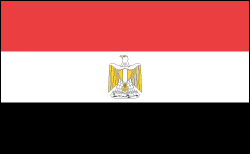Egypt History


Egypt Becomes a Republic
Tensions grew between the Wafd Party and the monarchy following independence, and in 1952, the army, led by Gen. Mohammed Naguib, seized power. Three days later, King Farouk abdicated in favor of his infant son. The monarchy was abolished and a republic proclaimed on June 18, 1953, with Naguib becoming president and prime minister. He relinquished the prime ministership in 1954 to Gamal Abdel Nasser, leader of the ruling military junta. Nasser also assumed the presidency in 1956.
Nasser's policies embroiled his country in continual conflict. In 1956, the U.S. and Britain withdrew their pledges of financial aid for the building of the Aswan High Dam. In response, Nasser nationalized the Suez Canal and expelled British oil and embassy officials. The Soviet Union then agreed to finance the dam and would come to exert increasing influence over Egypt in the coming decade. Israel, barred from the canal and exasperated by terrorist raids, invaded the Gaza Strip and the Sinai Peninsula. Britain and France, after demanding Egyptian evacuation of the canal zone, attacked Egypt on Oct. 31, 1956. Worldwide pressure forced Britain, France, and Israel to halt the hostilities. A UN emergency force occupied the canal zone, and all troops were evacuated in the spring of 1957.
From 1956 to 1961, Egypt and Syria united to form a single country called the United Arab Republic (UAR). Syria ended this relationship in 1961 after a military coup, but Egypt continued to call itself the UAR until 1971.







